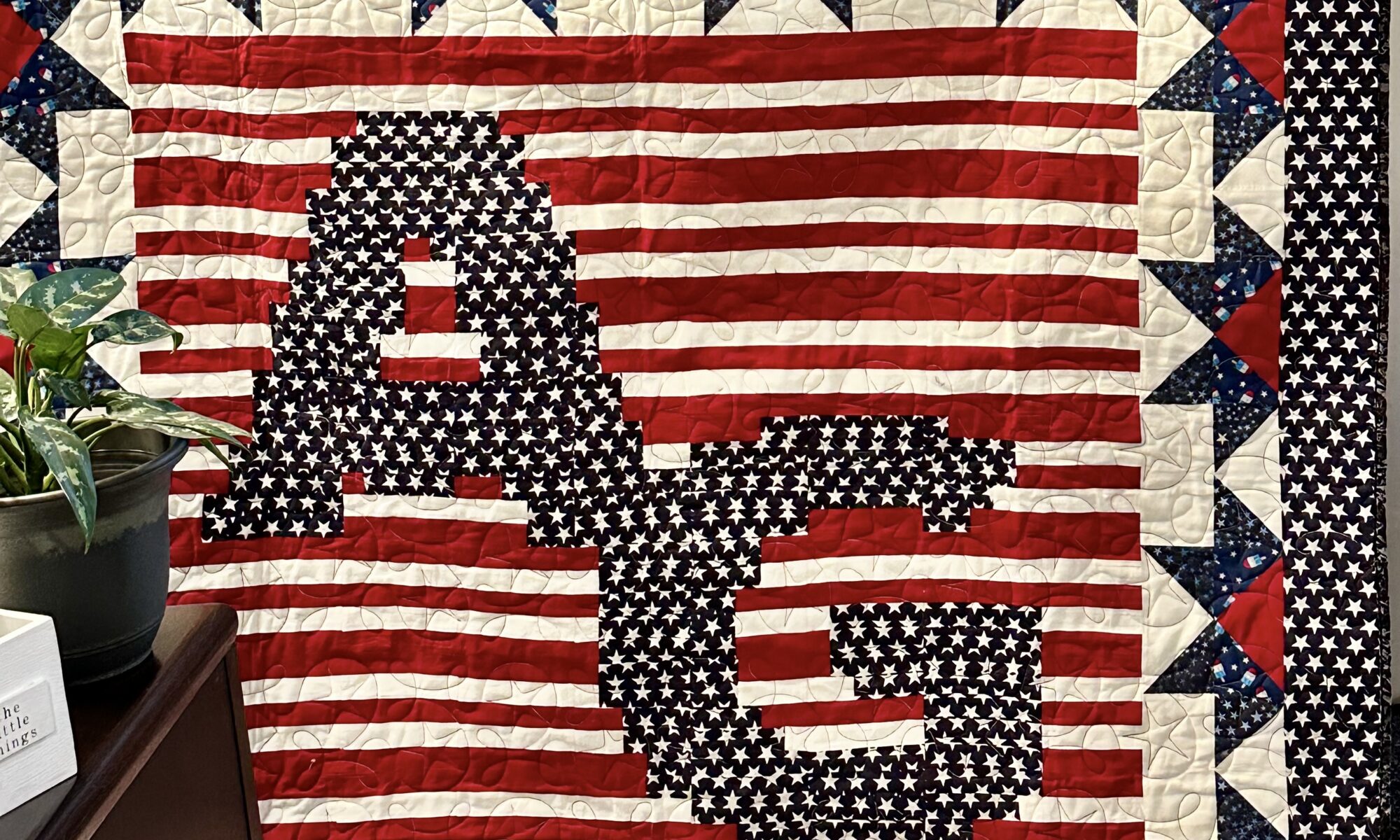This Stars and Stripes Quilt was a surprise gift. I wrestled with laying out the initials in this project, but I am thrilled with how it turned out.
The history of the United States flag, often referred to as the “Stars and Stripes,” is a story that has evolved over centuries. Here is a brief overview of its development:
Pre-Revolutionary Flags: Various flags represented the American colonies before the American Revolution. The British Union Jack was the most well-known, as the American colonies were part of the British Empire. However, colonial militias often had their own unique flags.
The Grand Union Flag (1775): This flag, also known as the Continental Colors, was one of the earliest flags representing American colonies during the Revolutionary War. It featured 13 alternating red and white stripes and the British Union Jack in the canton (upper left corner) to symbolize the colonies’ loyalty to the British Crown while also asserting their desire for rights and representation.
Betsy Ross Flag (1776): Legend has it that Betsy Ross, a Philadelphia seamstress, designed and sewed the first American flag with 13 stars and 13 stripes. While there is some debate about the accuracy of this story, the Betsy Ross flag is an iconic symbol of early American history.
The Flag Act of 1777: This act, passed by the Continental Congress on June 14, 1777, established the design for the American flag. It specified that the flag would consist of 13 alternating red and white stripes representing the original 13 colonies and 13 white stars on a blue field (canton) representing a new constellation, the United States. This design remains the basis for the flag today.
Addition of Stars and Stripes: As new states were admitted to the Union, stars and stripes were added to the flag. For each new state, a new star and stripe were added. This practice continued until 1818 when Congress decided to fix the number of stripes at 13 to honor the original colonies, and they would only add stars for new states. The flag with 13 alternating stripes and 50 stars is the current design.
Flag Day: Flag Day, celebrated on June 14th each year, commemorates the adoption of the Stars and Stripes by the Continental Congress in 1777. It is a day to celebrate the flag’s history and significance.
Respect for the Flag: Over the years, various codes and guidelines have been established to govern the proper use and display of the American flag, including rules on how it should be folded, flown at half-staff, and handled.
Evolution of Design: While the basic design of the American flag has remained consistent, there have been minor adjustments in the arrangement and design of the stars over time, particularly as new states were added to the Union.
Interested in having a custom quilt made? For custom quilts or media inquiries, please see my Get in Contact page.

